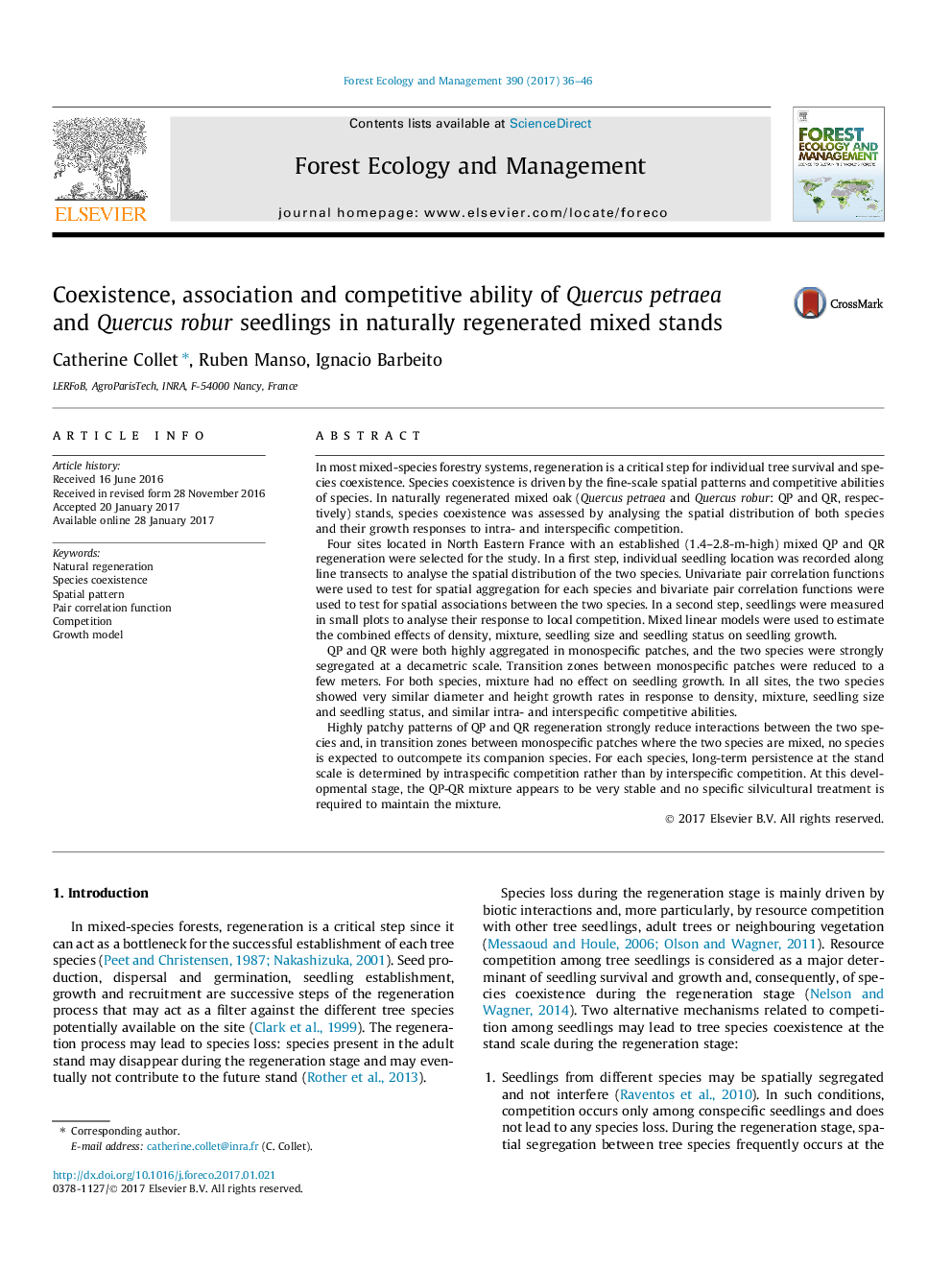| کد مقاله | کد نشریه | سال انتشار | مقاله انگلیسی | نسخه تمام متن |
|---|---|---|---|---|
| 6459505 | 1421368 | 2017 | 11 صفحه PDF | دانلود رایگان |

- Species coexistence was assessed in naturally regenerated mixed oak stands.
- Each species is highly aggregated and the two species are strongly segregated.
- The two species show similar growth rates and competitive abilities.
- The oak mixture is very stable at the regeneration stage.
- No silvicultural operation is required to maintain the mixture.
In most mixed-species forestry systems, regeneration is a critical step for individual tree survival and species coexistence. Species coexistence is driven by the fine-scale spatial patterns and competitive abilities of species. In naturally regenerated mixed oak (Quercus petraea and Quercus robur: QP and QR, respectively) stands, species coexistence was assessed by analysing the spatial distribution of both species and their growth responses to intra- and interspecific competition.Four sites located in North Eastern France with an established (1.4-2.8-m-high) mixed QP and QR regeneration were selected for the study. In a first step, individual seedling location was recorded along line transects to analyse the spatial distribution of the two species. Univariate pair correlation functions were used to test for spatial aggregation for each species and bivariate pair correlation functions were used to test for spatial associations between the two species. In a second step, seedlings were measured in small plots to analyse their response to local competition. Mixed linear models were used to estimate the combined effects of density, mixture, seedling size and seedling status on seedling growth.QP and QR were both highly aggregated in monospecific patches, and the two species were strongly segregated at a decametric scale. Transition zones between monospecific patches were reduced to a few meters. For both species, mixture had no effect on seedling growth. In all sites, the two species showed very similar diameter and height growth rates in response to density, mixture, seedling size and seedling status, and similar intra- and interspecific competitive abilities.Highly patchy patterns of QP and QR regeneration strongly reduce interactions between the two species and, in transition zones between monospecific patches where the two species are mixed, no species is expected to outcompete its companion species. For each species, long-term persistence at the stand scale is determined by intraspecific competition rather than by interspecific competition. At this developmental stage, the QP-QR mixture appears to be very stable and no specific silvicultural treatment is required to maintain the mixture.
Journal: Forest Ecology and Management - Volume 390, 15 April 2017, Pages 36-46